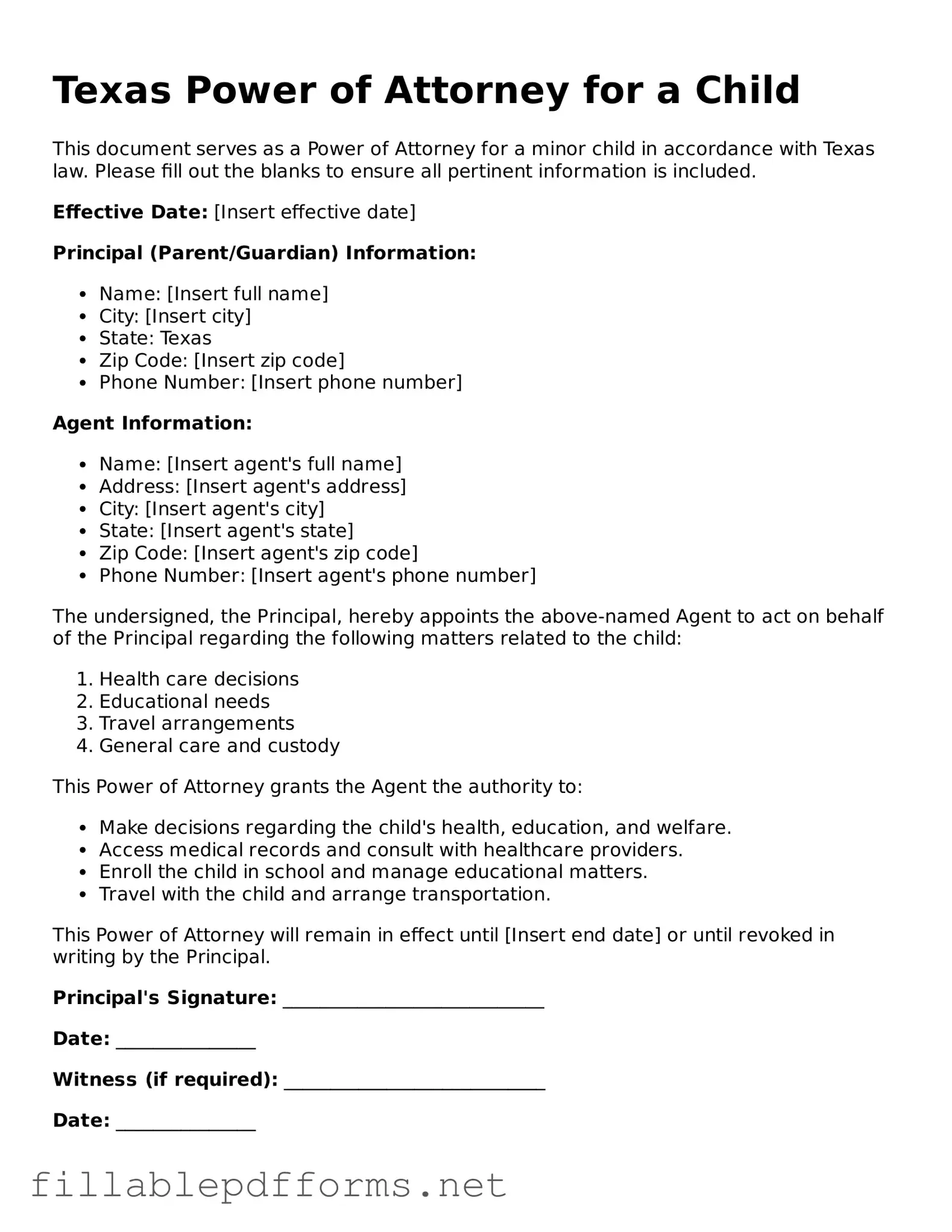Attorney-Verified Power of Attorney for a Child Form for Texas State
The Texas Power of Attorney for a Child form is a legal document that allows a parent or guardian to grant authority to another adult to make decisions on behalf of their child. This form is crucial for situations where the parent cannot be present, ensuring that the child's needs are met. Understanding its importance and proper use can provide peace of mind for families navigating temporary absences.
Launch Editor Here
